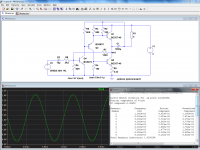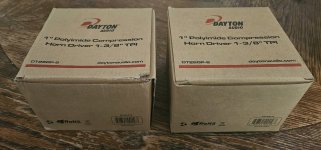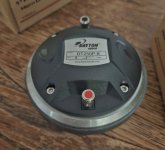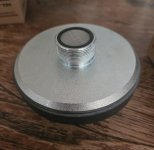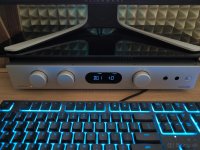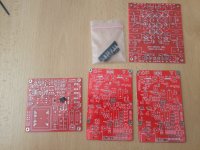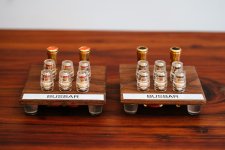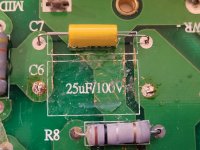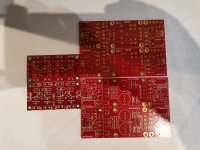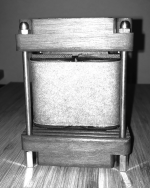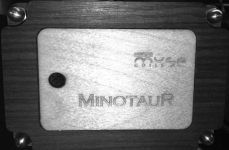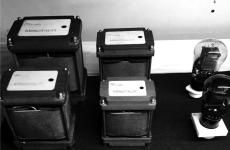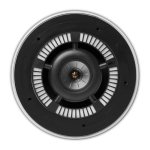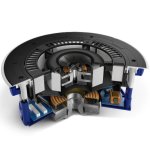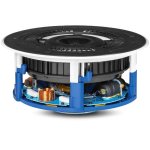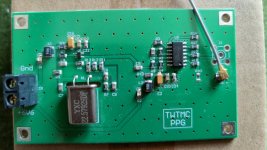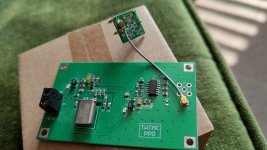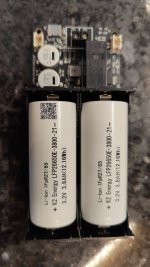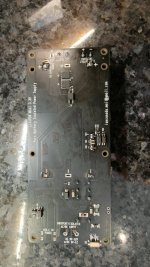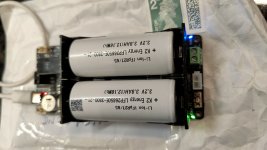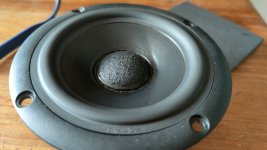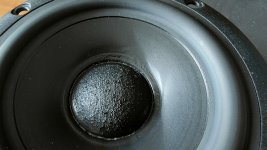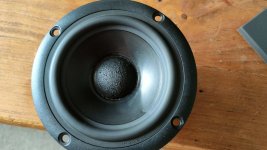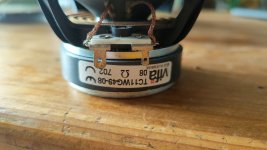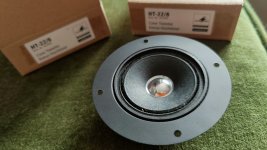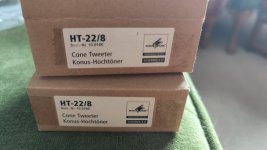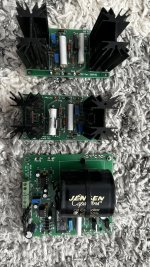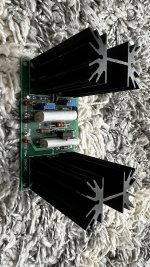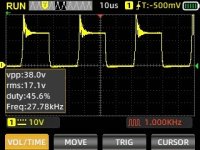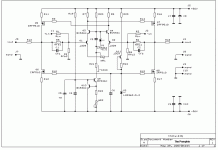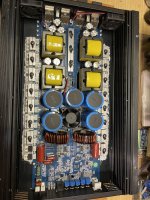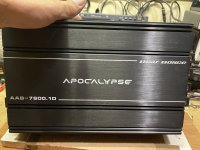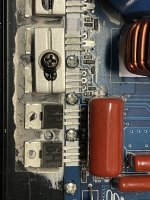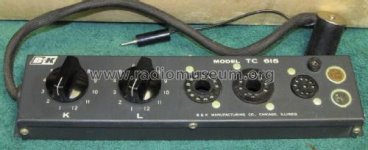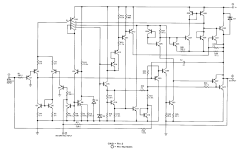You are using an out of date browser. It may not display this or other websites correctly.
You should upgrade or use an alternative browser.
You should upgrade or use an alternative browser.
Filters
Show only:
hello :)
- Introductions
- 1 Replies
Hey all!
Been a lurker for a bit and figured it was time to create an account. I am a software peep and have spent some time dabbling with dsp/SHARC, speaker correction, and codec work. Learning hardware aspect of things in my spare time. I'll probably ask a few questions haha.
Cheers,
Barold
Been a lurker for a bit and figured it was time to create an account. I am a software peep and have spent some time dabbling with dsp/SHARC, speaker correction, and codec work. Learning hardware aspect of things in my spare time. I'll probably ask a few questions haha.
Cheers,
Barold
I thought that "Analog Line Level" was a standard ...
- By daba1955
- Analog Line Level
- 24 Replies
... until I tried to replace an audio source (from a HDMI Audio Extractor device, unbranded), with the analog audio output of a SKY HD receiver (available in the SCART socket).
The result was very disappointing, the audio level was about half of that delivered by the extractor.
I can compensate by increasing the volume on the amplifier driving the ceiling speakers (sports bar venue), but that don't seem to be the right thing to do, as the punters like it load during important footy matches.
If I've got to use pre-amplifiers, I'm not going to achieve anything by trying to remove what I thought was superfluous kit....
The audio out from the SKY box was not variable with the "Volume Controls" on the SKY remote. is there a way to boost it ?
TIA
The result was very disappointing, the audio level was about half of that delivered by the extractor.
I can compensate by increasing the volume on the amplifier driving the ceiling speakers (sports bar venue), but that don't seem to be the right thing to do, as the punters like it load during important footy matches.
If I've got to use pre-amplifiers, I'm not going to achieve anything by trying to remove what I thought was superfluous kit....
The audio out from the SKY box was not variable with the "Volume Controls" on the SKY remote. is there a way to boost it ?
TIA
A small, low-voltage, battery operated amplifier
- By Elvee
- Headphone Systems
- 40 Replies
Hi,
Here is a small, low-voltage (3V or less) amplifier.
I wanted a signal-tracer amplifier, very small, and battery operated to be used in completely floating situations: like typically to measure the noise across a component.
This amplifier fits the bill. It is rather crude, but has some interesting features: it uses same-sex output transistors, operates efficiently at ridiculously low voltage levels, and yet offers a decent quality: here, it is shown at max output power, and the THD is well under 2%, with a nice harmonic profile.
At lower power, the distortion is even lower.
Also note that the gain is very high, because of the intended application.
More reasonable values would further decrease the THD, and increase the input impedance.
The peak to peak output voltage before clipping reaches 2.5V with a 3V supply, which is quite impressive
No temperature compensation is shown; for optimum stability, R4 should be an NTC (or an NTC should be part of R4).
But even without compensation, the stability is acceptable thanks to the low supply voltage: the total quiescent current establishes itself at ~10mA.
The polarity of all transistors could be reversed, allowing the use of germanium transistors: the only adaptation required is R4, that should be changed to 39 or 47 ohm.
R9 is optional, it slightly improves the THD and the stability.
Have fun!
Here is a small, low-voltage (3V or less) amplifier.
I wanted a signal-tracer amplifier, very small, and battery operated to be used in completely floating situations: like typically to measure the noise across a component.
This amplifier fits the bill. It is rather crude, but has some interesting features: it uses same-sex output transistors, operates efficiently at ridiculously low voltage levels, and yet offers a decent quality: here, it is shown at max output power, and the THD is well under 2%, with a nice harmonic profile.
At lower power, the distortion is even lower.
Also note that the gain is very high, because of the intended application.
More reasonable values would further decrease the THD, and increase the input impedance.
The peak to peak output voltage before clipping reaches 2.5V with a 3V supply, which is quite impressive
No temperature compensation is shown; for optimum stability, R4 should be an NTC (or an NTC should be part of R4).
But even without compensation, the stability is acceptable thanks to the low supply voltage: the total quiescent current establishes itself at ~10mA.
The polarity of all transistors could be reversed, allowing the use of germanium transistors: the only adaptation required is R4, that should be changed to 39 or 47 ohm.
R9 is optional, it slightly improves the THD and the stability.
Have fun!
Attachments
For Sale Dayton DT250P-8 1-3/8" TPI CD Tweeters
$75 plus shipping. They have not been used. They have some pretty glowing reviews online
Attachments
For Sale Audiolab 6000A
I sale amplifier AUDIOLAB 6000A in silver finish. The amplifier is fully functional and is in new condition i.e. without any signs of use. Complete accessories and original packaging available. The amp is free of any scratches, dents.
I am the first owner, the amp is 2 years old.
https://www.whathifi.com/reviews/audiolab-6000a
I only send within the EU. (paypal, wire transfer)
Price 500€ (incl. shipping)
I am the first owner, the amp is 2 years old.
https://www.whathifi.com/reviews/audiolab-6000a
I only send within the EU. (paypal, wire transfer)
Price 500€ (incl. shipping)
Attachments
For Sale Pearl 3 (PCB set)
For the end of DIY activities I am selling this SET.
2x PEAR3 PCB
8x 2sk170 (are originals from one member here from the forum...)
1x UDP3 board
1x inteligent softstart + ATina
Sold only as a whole at a great price (70€ + shipping)
Payment via PayPal or Wire transfer
2x PEAR3 PCB
8x 2sk170 (are originals from one member here from the forum...)
1x UDP3 board
1x inteligent softstart + ATina
Sold only as a whole at a great price (70€ + shipping)
Payment via PayPal or Wire transfer
Attachments
I need help from a Swedish member I would like to buy on Blocket SE
- By Decolour
- Full Range
- 3 Replies
Hi
I would like to buy a set of Mirage speaker on Blocket.se
I cannot register from Denmark.. Can any Swedish members help me out..
Best regards
Kim L. Poulsen
I would like to buy a set of Mirage speaker on Blocket.se
I cannot register from Denmark.. Can any Swedish members help me out..
Best regards
Kim L. Poulsen
What is Common-mode input voltage range, VICR
- By lineup
- Solid State
- 5 Replies
I have a datasheet with the following parameter:
Common-mode input voltage range
What is this?
Values:
Min 0V
Max VDD-1.5V
Common-mode input voltage range
What is this?
Values:
Min 0V
Max VDD-1.5V
Hello all
- By audiobabbL
- Introductions
- 3 Replies
Hello, new here. I'm interested in building myself some compact subs for a pair of B&O BEOVOX S30 speakers that I have.
Look forward to discussing some design ideas.
Look forward to discussing some design ideas.
Artisan passive crossover prototyping boards
- By gregulator
- Multi-Way
- 1 Replies
I thought I would share my solution for easily prototyping passive crossover filters.
I designed and made a few modular boards that can easily be connected to each other. They make it easy to try out different topologies and to compare different component values. Here is an example of a basic 2nd order 3khz crossover with a 6db lpad on the tweeter.

Since my speakers (live edge open baffles) emphasize the beauty of natural wood, I decided to make these from solid walnut with a natural hemp oil finish. Completely unnecessary, I know, but hey, it makes me happy ;-) These boards weren’t the cheapeast or easiest to make, but I had fun making them.
Busbar



The busbar units feature two (2) push terminals and six (6) mini banana plug terminals, all wired to each other.
Typically I use one busbar module connected to the amp’s positive (+) terminal and one connected to the amp’s negative (-) terminal. If building a parallel crossover, I can branch out to each driver’s individual circuit.
Busbar JR


The busbar JR features one (1) push terminal and four (4) mini banana plug terminals, all wired to eachother.
These are useful in series crossovers and the occasional busy junction.
SP


The “SP” unit stands for “series parallel”. This module puts one component in series with the output and one component in parallel with the output. It can be used for many things, such as creating an LPAD, an RL high-pass filter or a 2nd order filter.
The inputs and outputs include two (2) positive input terminals (+), one positive output terminal (OUT +) and two (2) negative terminals. By doubling up the positive and negative terminals, these modules can easily be daisy-chained.
The series component is connected with two push terminals. This makes it very easy to swap components to try different component values. The series connection can be shorted with a short length of speaker wire to use the SP module as a single parallel component.
The parallel component is also connected with two push terminals. The parallel component can be omitted to use the SP module as single series component.
There is additionally a “bypass” DPDT switch that shorts the series component and opens the parallel path. With the bypass engaged, it is as if the components have been removed from the circuit.
SPSP


The “SPSP” unit stands for “series parallel series parallel”. This module acts like two SP units sequenced together, “A” and “B”. It can be used for many things, such as:
The inputs and outputs include three (3) positive input terminals (+), two positive output terminal (OUT +) and two (2) negative terminals.
There are two DPDT switches. The first bypasses the first SP components (“A”), and the second bypasses the second SP components (“B”).
The switches open up lots of possibilities, such as:
Connections
I use small lengths of speakers wire with solder-on banana plugs to easily wire these modules together and to the speaker drivers.
Thanks for letting me share!
I designed and made a few modular boards that can easily be connected to each other. They make it easy to try out different topologies and to compare different component values. Here is an example of a basic 2nd order 3khz crossover with a 6db lpad on the tweeter.
Since my speakers (live edge open baffles) emphasize the beauty of natural wood, I decided to make these from solid walnut with a natural hemp oil finish. Completely unnecessary, I know, but hey, it makes me happy ;-) These boards weren’t the cheapeast or easiest to make, but I had fun making them.
Busbar
The busbar units feature two (2) push terminals and six (6) mini banana plug terminals, all wired to each other.
Typically I use one busbar module connected to the amp’s positive (+) terminal and one connected to the amp’s negative (-) terminal. If building a parallel crossover, I can branch out to each driver’s individual circuit.
Busbar JR
The busbar JR features one (1) push terminal and four (4) mini banana plug terminals, all wired to eachother.
These are useful in series crossovers and the occasional busy junction.
SP
The “SP” unit stands for “series parallel”. This module puts one component in series with the output and one component in parallel with the output. It can be used for many things, such as creating an LPAD, an RL high-pass filter or a 2nd order filter.
The inputs and outputs include two (2) positive input terminals (+), one positive output terminal (OUT +) and two (2) negative terminals. By doubling up the positive and negative terminals, these modules can easily be daisy-chained.
The series component is connected with two push terminals. This makes it very easy to swap components to try different component values. The series connection can be shorted with a short length of speaker wire to use the SP module as a single parallel component.
The parallel component is also connected with two push terminals. The parallel component can be omitted to use the SP module as single series component.
There is additionally a “bypass” DPDT switch that shorts the series component and opens the parallel path. With the bypass engaged, it is as if the components have been removed from the circuit.
SPSP
The “SPSP” unit stands for “series parallel series parallel”. This module acts like two SP units sequenced together, “A” and “B”. It can be used for many things, such as:
- A fourth-order high-pass or low-pass filter.
- A second-order high-pass AND a second-order low-pass filter.
- A second-order filter AND an LPAD.
- My personal favorite: an RL high-pass filter AND an LPAD.
The inputs and outputs include three (3) positive input terminals (+), two positive output terminal (OUT +) and two (2) negative terminals.
There are two DPDT switches. The first bypasses the first SP components (“A”), and the second bypasses the second SP components (“B”).
The switches open up lots of possibilities, such as:
- Compare different LPADs on “A” and “B”.
- Compare different second-order filters on “A” and “B”
Connections
I use small lengths of speakers wire with solder-on banana plugs to easily wire these modules together and to the speaker drivers.
Thanks for letting me share!
Attachments
Elekit 8600/8900 matching CD player
I’ve been searching everywhere for a tube CD player That will match my Elekit 8900 356mm width. The closest match I found is the Cayin A-50CD which is 350mm (13.77inches) wide. Only issue is the voltage is 220v , with no option for 110v.
What cd players are you all using ? I wish Elekit made a cd player again….

What cd players are you all using ? I wish Elekit made a cd player again….
Contemplating Quitting DIY
- Everything Else
- 44 Replies
In an effort of simplifying my life I’m considering quitting the DIY route. It takes me a long time to get stuff built (two years in on EL34 Baby Huey’s and don’t even have all the parts yet) and I’m thinking it might just be easier to buy good quality gear and be done with it. I’ve built tube amps, guitar amps, speakers, etc. what’s happening also is I’m ending up with stuff I have no room for too. I enjoy the process, but I’m in my mid 50’s and would rather spend the time listening instead of building, tweaking, etc.
Anyone else been in this predicament?
Anyone else been in this predicament?
Help with Capacitor Value for XO
- Multi-Way
- 13 Replies
Hi everyone,
I have been having issues with an Infinity Intermezzo 3.5c Centre Speaker. The mid is very very low, almost no sound.
I have traced it back to one of the capacitors.
The service manual shows C6 as 2.5uF 100V, however on the board itself it says 25uF 100V.
Since it's by a factor of 10, I'm hoping someone can look at the XO and can confirm if it should be 2.5uF or 25uF.
The original cap is blown and the jacket on the outside is damaged so I can't read what the actual value is on the old cap.
Any help would be appreciated.
TIA
I have been having issues with an Infinity Intermezzo 3.5c Centre Speaker. The mid is very very low, almost no sound.
I have traced it back to one of the capacitors.
The service manual shows C6 as 2.5uF 100V, however on the board itself it says 25uF 100V.
Since it's by a factor of 10, I'm hoping someone can look at the XO and can confirm if it should be 2.5uF or 25uF.
The original cap is blown and the jacket on the outside is damaged so I can't read what the actual value is on the old cap.
Any help would be appreciated.
TIA
Attachments
Passive Radiators for a drivers brand which doesn't have them
- Multi-Way
- 4 Replies
I couldn't find an answer anywhere. There is a new driver brand I'm working on a design for and I want to use a passive driver. They don't have one. Can you use passive drivers from a different brand? I did see this every now and then, but how to match them, where to look for? And as a second solution, can you use a active driver as a passive driver?
Anyone In Springfield, MO Area Who Builds DIY Speakers and Uses MiniDSP Active Crossover?
Wanting to find DIY Speaker builders in the Springfield MO area. I am currently working on an open baffle speaker. I made a passive crossover but want to adventure into the world of actIIve crossover using a MiniDSP Flex 8. If there is anyone with experience with the MiniDSP and setting up an active crossover? I would appreciate talking, learning and sharing with them. Thanks for considering answering my request. Greg (Ozark, MO).
50C5 SE output transformer
- By RC-30
- Tubes / Valves
- 6 Replies
Have 50C5 SE output transformer would it work with 6AQ5 tube don’t have LCR meter any recommendations on one from Amazon
Greetings from Italy
- By ra1nb0w
- Introductions
- 1 Replies
Hi,
I am a new OB from Italy.
Thank you very much for maintaining this very good forum.
I am a new OB from Italy.
Thank you very much for maintaining this very good forum.
For Sale Chipamp LM1875 boards + PSU boards
I have for sale LM1875 chipamp boards + psu boards 8chanels + 2 additional psu boards + LM1875 chips 8pcs.
35EUR
Payment by paypall+papall fee+ shipping.
35EUR
Payment by paypall+papall fee+ shipping.
Attachments
For Sale Iron Pre Bundle (Single Ended)
- By beattyomatic
- Swap Meet
- 6 Replies
I have the 2023 pre-release version of the Iron Pre essentials kit, plus the completion kit that was offered earlier this year. Both are untouched, and will sell for $200 combined, which is below the asking price when the full kit combo kit is in stock. Will also cover shipping in the continental US. How's that for a deal??
J
J
For Sale Goodmans Triaxiom 1220C with ARU units
Finally accepting that I’m just not going to get a chance to build cabs of the proper size for these so hoping someone else here would like to instead.
Drivers bought from another audio forum last year (or maybe the year before?). I collected in person so they wouldn’t be subject to any rough handling. I believe they had been stored for the best part of a decade before I bought them.
The ARUs were bought more recently from eBay and are in very good condition.
Drivers are in good condition with no cone rub.
I used them for about a month in my Tannoy Chatsworth cabinets which unfortunately are not big enough to get low bass out of the Goodmans. The quality of the drivers was quite apparent however - they are cleaner and more transparent than my Monitor Golds - and I’m certain that in the right cabinet (120L+) they would be very satisfying indeed.
The single crossover cap has been replaced (with a Mundorf IIRC) as the originals were far out of spec. I also bypassed the L-pads as per advice on here. I have the aluminium containers for the crossovers.
These are for collection only from Edinburgh, Scotland as I just don’t have time to organise all the packaging that would be needed to ship them safely. And even then I would be reluctant - I don’t suppose there’s many examples of these around nowadays.
I’m thinking £400 for drivers and ARUs but may be open to sensible offers.
Pictures to follow as soon as there’s some decent light.
Cheers
Ian
Drivers bought from another audio forum last year (or maybe the year before?). I collected in person so they wouldn’t be subject to any rough handling. I believe they had been stored for the best part of a decade before I bought them.
The ARUs were bought more recently from eBay and are in very good condition.
Drivers are in good condition with no cone rub.
I used them for about a month in my Tannoy Chatsworth cabinets which unfortunately are not big enough to get low bass out of the Goodmans. The quality of the drivers was quite apparent however - they are cleaner and more transparent than my Monitor Golds - and I’m certain that in the right cabinet (120L+) they would be very satisfying indeed.
The single crossover cap has been replaced (with a Mundorf IIRC) as the originals were far out of spec. I also bypassed the L-pads as per advice on here. I have the aluminium containers for the crossovers.
These are for collection only from Edinburgh, Scotland as I just don’t have time to organise all the packaging that would be needed to ship them safely. And even then I would be reluctant - I don’t suppose there’s many examples of these around nowadays.
I’m thinking £400 for drivers and ARUs but may be open to sensible offers.
Pictures to follow as soon as there’s some decent light.
Cheers
Ian
For Sale Headphone amp PCB
I bought 5 of these from JLPCB I only need 1 so if anyone is interrested Im selling the 4 leftovers.
Asking 10euro + shipping.
https://www.diyaudio.com/community/threads/gainwire-line-phone-non-gnfb-preamp.395695/#post-7265671

Asking 10euro + shipping.
https://www.diyaudio.com/community/threads/gainwire-line-phone-non-gnfb-preamp.395695/#post-7265671
Tweeter Recommendation for Faital Pro Mid-Bass 12-inch Woofer (12FH500-4)
- By eliasb1979
- Multi-Way
- 10 Replies
Hi all,
I'm new to speaker building (although I've built multiple amps and preamps) and picked up two Faital Pro 12FH500 4 ohm woofers for a very low price. I'd like to build a two way speaker out of these and need a recommendation on the tweeter and ideal crossover point. Should I try one of the Faital compression horn drivers? Does it matter they are 8 ohm?
Thanks!
Brad
I'm new to speaker building (although I've built multiple amps and preamps) and picked up two Faital Pro 12FH500 4 ohm woofers for a very low price. I'd like to build a two way speaker out of these and need a recommendation on the tweeter and ideal crossover point. Should I try one of the Faital compression horn drivers? Does it matter they are 8 ohm?
Thanks!
Brad
For Sale Muse Coils
Hi everyone, I am raising some fund for a new turntable purchase. So, I will be parting with a pair of power transformers and 4 chokes from Muse Coils. These are the state-of-the-art Minotaur series. Please email for pricing for these bespoke products. Here are some photos.
banpuku@mac.com
banpuku@mac.com
Attachments
Greetings from Garner, North Carolina, USA
- Introductions
- 4 Replies
I've been an analog audio enthusiast all my adult life. I'm a retired engineer and programmer, and have a second hobby of B&W film photography. I'm here because I have an RCA/Radio Shack receiver that has croaked, and I'd like to troubleshoot it myself, rather than take it to the recycle graveyard.
Automatic Polar Measurements using ARTA, stepper motor and Tic Controller
I have been in the process of researching and preparing to build an automatic measurement table for a while as making a large number of measurements manually is no fun and very time consuming.
I came across a great website I thought had everything I needed laid out and documented.
http://nicholasmart.in/measurement_platform/
I started getting together all the things I would need and came across a stumbling block. The software exe to have ARTA communicate with the Tic controller is not on the website and the author did not respond to my message or another request posted on another forum that seems to be discussing the same thing.
https://www.audiosciencereview.com/...ar-measurements-using-arta.14282/#post-438440
I started looking at coding it myself and quickly realised it would take me a long and frustrating time if I tried. Fortunately @Tom Kamphuys agreed to help me out with his coding skills, the reason this software works and is available here is due to almost solely to Tom's work.
He has created a github page where the source code is available. At this time the exe is not there but is attached to this post in a zip archive with a basic readme file to explain it.
https://github.com/TomKamphuys/Arta_Tic
This software was created to control a Tic stepper motor controller from Pololu via the ticcmd command line utility. ARTA sends commands to the turntable driver exe which interprets and passes the correct commands to ticcmd.
I have chosen to use the Tic 36v4 as it has the maximum current capacity (4.0A without extra cooling) and a NEMA 23 stepper with a 2.8A maximum current rating. These are probably overkill in most circumstances but I wanted to have the option to move heavier loads. In theory if the friction can be kept low enough these components can move more than 100Kg in the configuration I am building.
My setup will use two 600mm pre cut red oak circular table tops with ball castors in between. The red oak was chosen as it was stiff, solid and on special for on $10 AUD each.
The gearing will be a 360 tooth GT2 main pulley mounted to the table top underside with a 20 tooth pulley on the stepper with a closed loop GT2 belt. Very similar to that in the above measurement platform article. Underneath there will be a pine base frame to aid in stability with levelling feet.
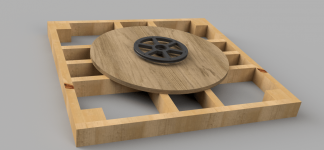
The pulley I have designed contains a 1" bearing that fits a 1" OD Aluminium tube piece used as a centre pin. I wanted to make this solid and low friction so the large bearing and tube seemed to fit the bill. I will make the pulley STL available once I have printed and tested it to make sure it works.
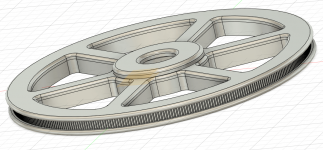
I have made a prototype without gears that functions as intended. I was able to make a 0 to 180 (10 degree increments) set of test measurements with ARTA on my laptop that took only a few minutes to complete.
@jcga was keen to update his existing ARTA turntable with a different motor and driver. He has also been able to use the software to move his table successfully, so I thought it worth making a thread to post the code in case this is useful to others.
Here is some information that might be helpful for set up to explain more of how the code functions
https://www.diyaudio.com/community/...-motor-and-tic-controller.387325/post-7769495
I went through a couple of different mechanisms before going back to belt drive. The final outcome can be seen here https://www.diyaudio.com/community/...-motor-and-tic-controller.387325/post-7776912
I came across a great website I thought had everything I needed laid out and documented.
http://nicholasmart.in/measurement_platform/
I started getting together all the things I would need and came across a stumbling block. The software exe to have ARTA communicate with the Tic controller is not on the website and the author did not respond to my message or another request posted on another forum that seems to be discussing the same thing.
https://www.audiosciencereview.com/...ar-measurements-using-arta.14282/#post-438440
I started looking at coding it myself and quickly realised it would take me a long and frustrating time if I tried. Fortunately @Tom Kamphuys agreed to help me out with his coding skills, the reason this software works and is available here is due to almost solely to Tom's work.
He has created a github page where the source code is available. At this time the exe is not there but is attached to this post in a zip archive with a basic readme file to explain it.
https://github.com/TomKamphuys/Arta_Tic
This software was created to control a Tic stepper motor controller from Pololu via the ticcmd command line utility. ARTA sends commands to the turntable driver exe which interprets and passes the correct commands to ticcmd.
I have chosen to use the Tic 36v4 as it has the maximum current capacity (4.0A without extra cooling) and a NEMA 23 stepper with a 2.8A maximum current rating. These are probably overkill in most circumstances but I wanted to have the option to move heavier loads. In theory if the friction can be kept low enough these components can move more than 100Kg in the configuration I am building.
My setup will use two 600mm pre cut red oak circular table tops with ball castors in between. The red oak was chosen as it was stiff, solid and on special for on $10 AUD each.
The gearing will be a 360 tooth GT2 main pulley mounted to the table top underside with a 20 tooth pulley on the stepper with a closed loop GT2 belt. Very similar to that in the above measurement platform article. Underneath there will be a pine base frame to aid in stability with levelling feet.

The pulley I have designed contains a 1" bearing that fits a 1" OD Aluminium tube piece used as a centre pin. I wanted to make this solid and low friction so the large bearing and tube seemed to fit the bill. I will make the pulley STL available once I have printed and tested it to make sure it works.

I have made a prototype without gears that functions as intended. I was able to make a 0 to 180 (10 degree increments) set of test measurements with ARTA on my laptop that took only a few minutes to complete.
@jcga was keen to update his existing ARTA turntable with a different motor and driver. He has also been able to use the software to move his table successfully, so I thought it worth making a thread to post the code in case this is useful to others.
Here is some information that might be helpful for set up to explain more of how the code functions
https://www.diyaudio.com/community/...-motor-and-tic-controller.387325/post-7769495
I went through a couple of different mechanisms before going back to belt drive. The final outcome can be seen here https://www.diyaudio.com/community/...-motor-and-tic-controller.387325/post-7776912
Attachments
subwoofer cutoff frequency help with powersoft DSP
- PA Systems
- 4 Replies
Good morning everyone, I'm trying my hand at building an 18" subwoofer with a Faital Pro component, the XL 1800, that works in a sealed box.
To move this subwoofer I will use a Powersoft module with a Loto DSP that has the crossover function inside.
The software called Harmony is very cumbersome and quite difficult to understand (at least for me who doesn't know this software). There are 3 equalizations with filters and slopes, so I think it's enough to choose one to create the filter.
Intuitively I modeled the subwoofer with a slope of 24db starting at 20hz with a high pass, the remaining frequencies are peaking up to 150hz, after which I have the low pass filter at 150hz with a slope of 24db. What I'm asking, are these the right filters to use to make it work correctly? I'll attach an illustrative photo later.
Thanks.
For those who want to take a look at the functions of the DSP I leave the link, the part interested in the development of frequencies and eq. is from section 8-3 onwards
https://www.powersoft.com/wp-content/uploads/user_guide/PS_LOTO_UG.pdf
To move this subwoofer I will use a Powersoft module with a Loto DSP that has the crossover function inside.
The software called Harmony is very cumbersome and quite difficult to understand (at least for me who doesn't know this software). There are 3 equalizations with filters and slopes, so I think it's enough to choose one to create the filter.
Intuitively I modeled the subwoofer with a slope of 24db starting at 20hz with a high pass, the remaining frequencies are peaking up to 150hz, after which I have the low pass filter at 150hz with a slope of 24db. What I'm asking, are these the right filters to use to make it work correctly? I'll attach an illustrative photo later.
Thanks.
For those who want to take a look at the functions of the DSP I leave the link, the part interested in the development of frequencies and eq. is from section 8-3 onwards
https://www.powersoft.com/wp-content/uploads/user_guide/PS_LOTO_UG.pdf
KEF Ci250RRM-THX Triaxial (Ring Slot-loaded Woofer)
Greetings! In a recent post, "What is this technique called?", mortron asked about ring slot-loaded woofers.
Not sure if this has already been discussed, but apparently KEF has some experience with ring slot-loaded woofers in their triaxial Architectural speaker, the Ci250RRM-THX. The White Paper is certainly an interesting read. Wondering if this design could present a viable foundation for custom HIFI loudspeaker design, i.e. using larger format drivers? Any thoughts?
Product Page
https://us.kef.com/products/ci250rrm-thx
White Paper
https://images.salsify.com/image/upload/s--NpCBx-SO--/w9cbdm861tt4vimzda3g.pdf
Specification Sheet
https://images.salsify.com/image/upload/s--eAiklJpu--/tvle4ezw8itx5p19ba7v.pdf
Discussion
https://www.audiosciencereview.com/forum/index.php?threads/kef-ci250rrm.37929/
https://www.audiosciencereview.com/forum/index.php?threads/kef-ci250rrm-thx.39104/
Not sure if this has already been discussed, but apparently KEF has some experience with ring slot-loaded woofers in their triaxial Architectural speaker, the Ci250RRM-THX. The White Paper is certainly an interesting read. Wondering if this design could present a viable foundation for custom HIFI loudspeaker design, i.e. using larger format drivers? Any thoughts?
Product Page
https://us.kef.com/products/ci250rrm-thx
White Paper
https://images.salsify.com/image/upload/s--NpCBx-SO--/w9cbdm861tt4vimzda3g.pdf
Specification Sheet
https://images.salsify.com/image/upload/s--eAiklJpu--/tvle4ezw8itx5p19ba7v.pdf
Discussion
https://www.audiosciencereview.com/forum/index.php?threads/kef-ci250rrm.37929/
https://www.audiosciencereview.com/forum/index.php?threads/kef-ci250rrm-thx.39104/
Attachments
Andrea Mori TWTMC PPG 22Mhz f/s
Selling this entry level Andrea Mori clock. It has a squarer on board so can be fed a sine.
Runs on 6.6v.
Was an honest upgrade over the NDKs I had in the FifoPi. I used a Ti TPSA7 regulator as PSU.
Good upgrade without spending lots and having a complicated set up.
£40
Runs on 6.6v.
Was an honest upgrade over the NDKs I had in the FifoPi. I used a Ti TPSA7 regulator as PSU.
Good upgrade without spending lots and having a complicated set up.
£40
Attachments
Attenuater's who needs them! Help to bypass for better sound
Me again! Need to bypass the above from Akai sw155 speakers. I've tried to clean the pots with electrical cleaner (deoxit) but still nothing! Let me rewind, Akai sw155 4way speakers just popped up and naw I got them. At the rear of the speakers we have controls for high and mid. Plugged them in and it was all wrong, scratching pots as I turned them. Decided to clean the pots but no. One speaker is intermittent, other has no high frequency (tweeter/super tweeter)
Adjustments can be made at amplifier so I'd rather bypass.
Sorry unable to take detailed pictures but will try my best.
Adjustments can be made at amplifier so I'd rather bypass.
Sorry unable to take detailed pictures but will try my best.
Ian Canada LifoPo4Mini3.3v f/s UK
Selling this battery PSU.
The small SMD switch has lost its little tab. It is in the 'ON' position.
The batteries in it are actually 3.2v and not 3.3 and the output from the PSU is 3.15v. I used it on the clean side of my Fifopi with no issues.
Take care with the input voltage as it does get hot if fed too much AC. Once it's all charged up it settles down thermally. I just tested it with a 2A 5V USB C and it soon gave me the blue 'Pure' indicator.
£50 plus post.
The small SMD switch has lost its little tab. It is in the 'ON' position.
The batteries in it are actually 3.2v and not 3.3 and the output from the PSU is 3.15v. I used it on the clean side of my Fifopi with no issues.
Take care with the input voltage as it does get hot if fed too much AC. Once it's all charged up it settles down thermally. I just tested it with a 2A 5V USB C and it soon gave me the blue 'Pure' indicator.
£50 plus post.
Attachments
Difficulty finding a replacement cap
- By Black Stuart
- Parts
- 15 Replies
I need to replace PSU caps in my 2 KD990 t/ts. They are Elna 2200uF/25V snap in 25mm w x 18mm d. There is a Polish guy on Ebay offering a complete set of electros for the KD990. I don't need a complete set just the PSU caps. I left a message on Ebay hoping he would response - no joy. I can see he's using 2700uF/50V which are the same size but I can't see the make. Can anyone help?
Vifa TC11WG49-08 x1 f/s UK
Unfortunately just the one of these. I used it in a centre speaker. Slight crease in the cone .
With gasket
£10
With gasket
£10
Attachments
Stupid question but just maybe?
I was thinking about removing the ST and the 4way becomes 3way how?
Can I put in parallel this 4uf from mid to tweeter, will the T be able to cover the very high frequency thus removes the ST?
I got pic of crossover
Can I put in parallel this 4uf from mid to tweeter, will the T be able to cover the very high frequency thus removes the ST?
I got pic of crossover
Attachments
Does anyone have a link to a known, high(est) quality voice recording?
- Room Acoustics & Mods
- 7 Replies
as above. Spoken voice, not music. Thanking you kindly.
I need more information on my accidental Helmholtz absorber / trap?
- By Surtsey
- Subwoofers
- 6 Replies
@weltersys made a comment recently which has confused me. I recently acquired an Audica SUB10 with a faulty plate amp. I discarded the plate amp and made the unit passive. However, the plate amp was housed in its own 6 litre compartment. I used a hole saw to make a 60mm hole through to the main chamber, adding the 6 litres to the main cabinet volume. @weltersys informed me that I'd created a Helmholtz absorber @200hz.
What does this mean?
What are the benefits of making another hole?
What does this mean?
What are the benefits of making another hole?
Building top cabs
Looking to build a PA system for my church , i have some knowledge in mixing sound etc but putting the Speakers together trips me up...
My top Cab Amplifier is pushing 1050w RMS @ 4ohms so I would like to build something around that power rating.
Can someone please point me in the right direction in building this...
I have empty cabs so i need recommended Compression drivers (tweeter) 1-3/8 TPI thread and recommended 15"s DUAL SETUP then Ill also like to put in a 3 way Frequency driver/crossover
Technically I just need the RMS wattage of these speakers that will be able to SAFELY go along with the amplifier @ 4ohms any help would be greatly appreciated.
Recommended speakers would be a plus 🙂 save me time looking around altho i do have a budget but ill at least know what im shopping for.
My top Cab Amplifier is pushing 1050w RMS @ 4ohms so I would like to build something around that power rating.
Can someone please point me in the right direction in building this...
I have empty cabs so i need recommended Compression drivers (tweeter) 1-3/8 TPI thread and recommended 15"s DUAL SETUP then Ill also like to put in a 3 way Frequency driver/crossover
Technically I just need the RMS wattage of these speakers that will be able to SAFELY go along with the amplifier @ 4ohms any help would be greatly appreciated.
Recommended speakers would be a plus 🙂 save me time looking around altho i do have a budget but ill at least know what im shopping for.
New high speed USB isolator from TI - ISOUSB211
- By lasercut
- Digital Line Level
- 37 Replies
Just came across this relatively new part and haven't found any discussion, finally a low cost solution for USB isolation with high speed devices, basically all modern DACs at this point.
Should allow an external isolator to be easily added to any USB DAC, might not hurt to have this extra layer of isolation in DACs with internal post-USB isolation either.
Should allow an external isolator to be easily added to any USB DAC, might not hurt to have this extra layer of isolation in DACs with internal post-USB isolation either.
Need help - Reduce noise in greenhouse wedding venue
- By hamohl
- Room Acoustics & Mods
- 12 Replies
Hi everyone,
I'm new here, so apologies if I'm framing this in the wrong way or posting in the wrong forum.
Hopefully about to get married next year and we found this fantastic venue. They have a large outdoor greenhouse of 7x14 meters (22'11" x 45'11") just by the water, that seats 100+ people.
Now, we talked to some other friends who just attended a wedding there, they said everything was great except very loud noise level in the greenhouse, could barely hear your neighbour across the table. From what I hear, glass is the worst offender when it comes to sound reflection, which is kind of worrying.
Need some help/ideas what measures can be taken here to reduce the noise level, while keeping it wedding appropriate? My own ideas so far involve hanging white heavy fabrics across the ceiling, and some type of curtains in the corners perhaps. Not sure how much it would help. Appreciate any pointers.
Attached a partial photo of the greenhouse I found in the venue gallery (backside is facing rocks, could possibly be covered by curtains).

I'm new here, so apologies if I'm framing this in the wrong way or posting in the wrong forum.
Hopefully about to get married next year and we found this fantastic venue. They have a large outdoor greenhouse of 7x14 meters (22'11" x 45'11") just by the water, that seats 100+ people.
Now, we talked to some other friends who just attended a wedding there, they said everything was great except very loud noise level in the greenhouse, could barely hear your neighbour across the table. From what I hear, glass is the worst offender when it comes to sound reflection, which is kind of worrying.
Need some help/ideas what measures can be taken here to reduce the noise level, while keeping it wedding appropriate? My own ideas so far involve hanging white heavy fabrics across the ceiling, and some type of curtains in the corners perhaps. Not sure how much it would help. Appreciate any pointers.
Attached a partial photo of the greenhouse I found in the venue gallery (backside is facing rocks, could possibly be covered by curtains).
Looking for a manual for the Luxkit / Luxman A2003/A2002 active tube crossover
- By RemcoB
- Tubes / Valves
- 0 Replies
Hi, I have recently bought a Luxkit A 2002 active tube crossover. There was someone supplying a manual in pdf form, however his website is down and his e-mail address and phone number don't work anymore. Does anyone still have the manual for the A2003 or A2002 lying around?
Hi from Stockholm, Sweden
- By Fungrim
- Introductions
- 2 Replies
Hi all,
I'm a software engineer turned entrepreneur and sometimes manager. I have too many hobbies and not enough time, but I figure that's going to be pretty common around here 🙂
Since I had a few months between jobs, and a pair Tang Band W8-1808 turned up on the second hand market I decided that it was time to stop reading about DIY speakers and actually do it myself.
You can also find me here: https://larsan.net/
I'm happy to be here!
/Fungrim
I'm a software engineer turned entrepreneur and sometimes manager. I have too many hobbies and not enough time, but I figure that's going to be pretty common around here 🙂
Since I had a few months between jobs, and a pair Tang Band W8-1808 turned up on the second hand market I decided that it was time to stop reading about DIY speakers and actually do it myself.
You can also find me here: https://larsan.net/
I'm happy to be here!
/Fungrim
For Sale Fully assembled K&K Audio High Voltage Power Supply kit for Tube with 2 piece Shunt Regulator Kit
1. Fully assembled K&K Audio High Voltage Power Supply with Jensen 50uF 250VDC MP/oil cap. It has a time delay kit for the B+ Voltage.
2. Fully assembled K&K Audio Shunt Regulator Kit (max 350VDC, 100mA) -- 2 piece
I have user manual which I will share with buyer via email.
Bought for a project but never able to finish it up. So available for sale. Asking $200 USD, will ship anywhere at buyer's expense.
Let me know if you have any questions.
2. Fully assembled K&K Audio Shunt Regulator Kit (max 350VDC, 100mA) -- 2 piece
I have user manual which I will share with buyer via email.
Bought for a project but never able to finish it up. So available for sale. Asking $200 USD, will ship anywhere at buyer's expense.
Let me know if you have any questions.
Attachments
New pair of Alpair 11ms
- By type
- Full Range
- 245 Replies
Just got a new pair of Mark Audio Alpair 11ms. Beautiful drivers. Thinking about a Nostromo build.
Attachments
-
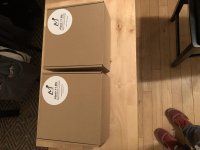 F64E1B3B-F00A-488B-B0D4-4EFED6D7B496.jpg694.6 KB · Views: 2,278
F64E1B3B-F00A-488B-B0D4-4EFED6D7B496.jpg694.6 KB · Views: 2,278 -
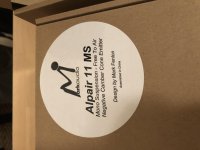 2D9DB524-A636-4D8F-9711-803BDAD54E09.jpg676.9 KB · Views: 2,233
2D9DB524-A636-4D8F-9711-803BDAD54E09.jpg676.9 KB · Views: 2,233 -
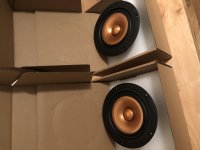 7D6CFBA1-CC2D-4720-AFA3-7A2F9789DB65.jpg684.2 KB · Views: 2,280
7D6CFBA1-CC2D-4720-AFA3-7A2F9789DB65.jpg684.2 KB · Views: 2,280 -
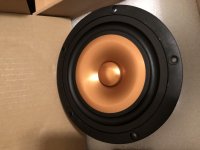 03137363-BCF1-4CC4-98F6-4C6ED0329662.jpg656.1 KB · Views: 2,239
03137363-BCF1-4CC4-98F6-4C6ED0329662.jpg656.1 KB · Views: 2,239 -
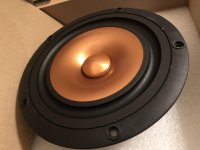 62A4D52E-D0E5-4710-96FB-C32BEA055A6E.jpg812.3 KB · Views: 2,228
62A4D52E-D0E5-4710-96FB-C32BEA055A6E.jpg812.3 KB · Views: 2,228
Sony TA-F590ES for Germany
- By kumiroff
- Solid State
- 23 Replies
Friends, who can tell me what caused such a wild shunting of the amplifier for the German market? Are these such requirements? Or is it a "correction" for German hearing? Look at the diagram, IMHO, the removal of a heap of containers (indicated by the letter G in the diagram) should have a positive effect on the sound. Any opinions?
Attachments
Voltage spikes on power supply mosfets drains
Hello everyone
I'm repairing a clone BASSFACE 3000W class D mono block with dead power supply and output section.
When I fitted the new FETs and drivers, I noticed big inductive spikes on the drains of the power supply mosfets.
I already brought down the frequency to 20 KHz to minimize the effect on the mosfets.
Is there any way to get rid of these spikes or it's just a bad design of the transformers and nothing could be down for it?

I'm repairing a clone BASSFACE 3000W class D mono block with dead power supply and output section.
When I fitted the new FETs and drivers, I noticed big inductive spikes on the drains of the power supply mosfets.
I already brought down the frequency to 20 KHz to minimize the effect on the mosfets.
Is there any way to get rid of these spikes or it's just a bad design of the transformers and nothing could be down for it?
Attachments
Help identifying transistor part# in Classe CA-200 amplifier
- By BrokenOath
- Solid State
- 3 Replies
Hi Guys,
I have my Classe Ca-200 amp blew up on me a few days ago. I opened it up and found two of the 18 heat-sink mounted transistors have burned. I have tested the remaining 16 and they are ok. There were two small transistors that I can figure out the part number for them. The one for the left channel is labeled as Q108 and Q208 for the right channel on the board Here is a copy of the section of the schematics for the left channel of the amp. Can someone please help me identify the part number for Q108?

I have my Classe Ca-200 amp blew up on me a few days ago. I opened it up and found two of the 18 heat-sink mounted transistors have burned. I have tested the remaining 16 and they are ok. There were two small transistors that I can figure out the part number for them. The one for the left channel is labeled as Q108 and Q208 for the right channel on the board Here is a copy of the section of the schematics for the left channel of the amp. Can someone please help me identify the part number for Q108?
Good value wall treatment?
- By SQLGuy
- Room Acoustics & Mods
- 15 Replies
I am looking to buy a house that has a decent option for an audio room. It is about 12' (3.6m) wide and 28' (8.6m) long. I would prefer a bit wider and a bit shorter, but it's better than most options we've seen so far. It's on the ground floor. The floor is tile on concrete. One long wall is probably concrete blocks with plaster and two french doors. The other three walls are (I think) plaster blocks. The plaster is all bare - no wallpaper, paint, or anything on there. It's quite live right now. I'm wondering what I should be looking at for wall treatments to make it more neutral. There will be a couch in there, and probably an area rug, which will help a bit. Acoustic wall panels look to run about 175 euros per 60cm (two feet) of wall length, which adds up pretty quickly even if I'm looking to do live end / dead end.
The speakers in question are Magnepan Tympani IVs, with the mid/tweeter panels separated so they can be placed in front of the bass panels. The sub is a VMPS new larger sub. The room is smaller, or, at least, narrower, than the room I used to have this setup in. Oh, I also do have a DEX2496 and DEQ2496 which can allow for quite a lot of EQ to help adjust for resonances, at least.
Ideas? Wood panelling, maybe? Thanks!
The speakers in question are Magnepan Tympani IVs, with the mid/tweeter panels separated so they can be placed in front of the bass panels. The sub is a VMPS new larger sub. The room is smaller, or, at least, narrower, than the room I used to have this setup in. Oh, I also do have a DEX2496 and DEQ2496 which can allow for quite a lot of EQ to help adjust for resonances, at least.
Ideas? Wood panelling, maybe? Thanks!
Help/Confirmation identifying a 5pin connector from a picture: which serie? (2mm pitch on pcb)
Hi
As i have been burned quite a few times thinking i know the right connector and failing (having to re-order...), i would be grateful if some could help me identifying the connector on the picture.
It is mentionned a 2mm pitch on the PCB. It connects a keyboard pcb to a usb-A cable.
Given the 2mm pitch on pcb, is it for sure a PH or a PA (refering to link ) ?
Thanks in advance
ps:
Purpose: ordering the counter connector with a cable to change the type of mechanical connection (usb-c instead of usb-a)

As i have been burned quite a few times thinking i know the right connector and failing (having to re-order...), i would be grateful if some could help me identifying the connector on the picture.
It is mentionned a 2mm pitch on the PCB. It connects a keyboard pcb to a usb-A cable.
Given the 2mm pitch on pcb, is it for sure a PH or a PA (refering to link ) ?
Thanks in advance
ps:
Purpose: ordering the counter connector with a cable to change the type of mechanical connection (usb-c instead of usb-a)
Input sensitivity of TDA7498e?
Does anyone know what the recommended line input voltage is for the tda7498e? I've read the datasheet a couple times but most of what I'm reading is above my head and it isn't clearly stated.
AmpCamp Amp 1.6 using as monoblocks
hi,
question: I got two ACA 1.6 amps. One with power switch in front and a stereo/mono switch in back (amp1). The other has the power switch in back and no stereo/mono switch (amp2), it's just wired for stereo.
I want to use the two amps as monoblocks, each amp powering one speaker. When connecting the cables like in the build guide, I noticed less power coming out of the amp with no stereo/mono switch. Am I correct that this has to do with amp2 only using one channel for amplification, not both? And, would a solution be to use XLR outs as those seem to be wired to both channels on amp1 and amp2? Or would there be another solution that's practical.
Thanks in advance for any advice!
Martin
question: I got two ACA 1.6 amps. One with power switch in front and a stereo/mono switch in back (amp1). The other has the power switch in back and no stereo/mono switch (amp2), it's just wired for stereo.
I want to use the two amps as monoblocks, each amp powering one speaker. When connecting the cables like in the build guide, I noticed less power coming out of the amp with no stereo/mono switch. Am I correct that this has to do with amp2 only using one channel for amplification, not both? And, would a solution be to use XLR outs as those seem to be wired to both channels on amp1 and amp2? Or would there be another solution that's practical.
Thanks in advance for any advice!
Martin
Tom Johnson from Hendersonville NC
- By Tom Johnson
- Introductions
- 2 Replies
Hello, looking forward to getting to know you guys. I am into tube amplifiers and have started designing my own recently. After getting a better understanding of how stuff works instead of just following a schematic.
Regards, Tom
Regards, Tom
Two mystery tubes: Hoges ECC88 and Haltron 12AT7
- By mdr30
- Tubes / Valves
- 44 Replies
A ECC88 and 12AT7/ECC81 from rebranders Hoges and Haltron respectively.
The Hoges ECC88 has a strong resemblance to Siemens tubes of the same type, like the getter installation and two-step support. But I can't recall seeing that first step metal plate being circular with no machining/cutting done to the part.




The Haltron ECC81 looks like the Philips family of tube construction. It very much resembles a Mullard (Philips branded) ECC81 I've got, but as the Haltron has four glass seams at the top this is apparently not possible. Another guess would be the Indian BEL factory who collaborated with Philips/Mullard. As a matter of fact, it reminded me of a BEL E81CC (Zaerix branded) that I brought to attention in another thread (https://www.diyaudio.com/community/threads/zaerix-e81cc.404144/). The look very much alike, except that the Haltron has ribbed plates versus smooth ones on the BEL/Zaerix.




Please chime in if you have any thoughts, suggestions!
The Hoges ECC88 has a strong resemblance to Siemens tubes of the same type, like the getter installation and two-step support. But I can't recall seeing that first step metal plate being circular with no machining/cutting done to the part.
The Haltron ECC81 looks like the Philips family of tube construction. It very much resembles a Mullard (Philips branded) ECC81 I've got, but as the Haltron has four glass seams at the top this is apparently not possible. Another guess would be the Indian BEL factory who collaborated with Philips/Mullard. As a matter of fact, it reminded me of a BEL E81CC (Zaerix branded) that I brought to attention in another thread (https://www.diyaudio.com/community/threads/zaerix-e81cc.404144/). The look very much alike, except that the Haltron has ribbed plates versus smooth ones on the BEL/Zaerix.
Please chime in if you have any thoughts, suggestions!
KiCad V8 is announced
- By davidsrsb
- Software Tools
- 10 Replies
V8.0.0 is released
Read the blog posting for a summary of the new features
https://www.kicad.org/blog/2024/02/Version-8.0.0-Released/
Read the blog posting for a summary of the new features
https://www.kicad.org/blog/2024/02/Version-8.0.0-Released/
Looking for high quality NOS DAC kit
- By Deka
- Digital Line Level
- 13 Replies
Hello Guys,
I'm looking for a good DAC kit (or assembled).
I'm listening music in CD quality, but some frequency correction is also needed, so a 20bit or 24bit DAC would be fine.
What I already found:
I afraid, none of them are good quality designs.
I have seen some Abraxalito DACs here (I'm sure they are all well designed DACs), but all of them were 16bit only.
Do you have any recommendations for other valuable NOS DAC kits?
I'm looking for a good DAC kit (or assembled).
I'm listening music in CD quality, but some frequency correction is also needed, so a 20bit or 24bit DAC would be fine.
What I already found:
- Ladder DACs on ebay (for 65EUR or much more)
- Some PCM61, AD1865 based products, also on ebay (about 100 EUR)
I afraid, none of them are good quality designs.
I have seen some Abraxalito DACs here (I'm sure they are all well designed DACs), but all of them were 16bit only.
Do you have any recommendations for other valuable NOS DAC kits?
This guy is doing this hobby the way I always wanted to do it
- By Windcrest77
- Tubes / Valves
- 133 Replies
I came across this video. I'm a Newby, but when I decided to do this hobby, I always thought I'd be doing it the way this guy is, totally experimentally. I have a lot to learn to get to this point. He made a "tube tester" that let's you set up and dial-in any operating point, while simultaneously obtaining the harmonic profile you like, in real time, while simultaneously hearing it musically in real time! He is a man after my heart. I know Spice is all the rage, and my journey has taken me on many tangents. I ought to go back to what I intuitively thought I would be doing learning tubes, which is what I'm seeing in this elegantly simple video. I don't understand everything he's doing like with the triangle waves, but the ability to dial in an operation point, harmonic profile and hear the music simultaneously is amazing to me here. Worth the watch. Its in German I think, but has subtitles.
Login to view embedded media
Login to view embedded media
For Sale New Tangband W5-2143 drivers for sale (4)
Four brand new Tang-band W5-2143 Full-range Drivers - $125.00 for all four. I won't pay for shipping, sorry. Vancouver, BC. area.

Hello from California
- By yamavato
- Introductions
- 1 Replies
I design and build tube amplifiers as well as modify and repair existing amplifiers. I've been at this since the seventies, although there were some stretches when I didn't work with electronics. I probably don't have much to contribute to this forum because it appears as though there are members here that pretty much cover anything and everything. But who knows, maybe I can help with some obscure tangents every now and then.
Greetings
- By Leo_chuek
- Introductions
- 1 Replies
Hey greetings from MTY, MX i hope i can learn a Lot from this page
Pumpkin Preamp - Perfect for F4
there it is
schm and render of pcb enclosed
now I'm waiting for pcb protos and heatsinks ,just to tweak some values - this time I'm lazy (or spoiled?) to make Ikebana prototype
I don't like to use nag nag protoboards where I can't see connection, contrary to Oly......pcb wizz with 100 yrs of needlepoint experience
this preamp is in fact Steen's wish, sorta half UGS bla bla
seems that this days I can't make anything what Papa already didn't
why that reminds me on old story about pigs and pearls
there is proverb in my native........"there is no bad swill for good pig"
Pink Floyd ZM
schm and render of pcb enclosed
now I'm waiting for pcb protos and heatsinks ,just to tweak some values - this time I'm lazy (or spoiled?) to make Ikebana prototype
I don't like to use nag nag protoboards where I can't see connection, contrary to Oly......pcb wizz with 100 yrs of needlepoint experience
this preamp is in fact Steen's wish, sorta half UGS bla bla
seems that this days I can't make anything what Papa already didn't
why that reminds me on old story about pigs and pearls

there is proverb in my native........"there is no bad swill for good pig"
Pink Floyd ZM
Attachments
Free: Dayton 10" RSS265HF-8 subwoofer driver
- By bourbon-neat
- Swap Meet
- 5 Replies
I have one used, working Dayton 10" RSS265HF-8 subwoofer driver that I'd like to give away. This is available for pickup in San Jose, CA.


Luxman C-02 RCA jacks
- By findog3103
- Analog Line Level
- 14 Replies
| Hi, I have a Luxman C-02 and have a couple of broken RCA jacks (chipped off plastic inside the metal). I have the service manual, but is anyone familiar with the C-02, do you know where I can get replacement jacks for the unit? Or, is there a different part replacement I can use? Thanks, Jason |
Def Bonce AAB-7900.1D Output Mosfets, etc
Hey all, looking to know what these “H9” output FETs are on this DB AAB-7900.1D are, non-destructive high side right bank failure, looks to be a single MOSFET, took a cap out near the speaker inputs as well. Any info towards finding out what they are would be greatly appreciated, I’m thinking the IRF4115 but not certain. Also would be helpful to know what others are using for the signal/zener diodes at each FET bank as I’m not over familiar with this package type 😅
🖖🏼
🖖🏼
Attachments
Basis for Hofmann's law
- By fers
- Subwoofers
- 19 Replies
I see people often speak of Hofmann's law when referring to a fundamental tradeoff between the size, the low frequency extension and the efficiency of an enclosure design. It is often mentionned that all enclosure types are subjected to the same tradeoff. After seeing references to this "iron law" being broken with some new driver technology by Brane Audio, I was puzzled as what they proposed (successfully or not, this is beyond the point of this thread) would only solve the problem of a driver having to work against a reducing compliance in smaller and smaller enclosures. This made me think that I misjudged what is referred to as "Hofmann's law", as I thought the theoretical basis for such a general law had to be concerned with the radiation impedance available at a certain size, irrespective of driver technology. The only "derivation" I could find for it by Henry Kloss is concerned only with the limitation tentatively addressed by the Brane Audio approach (while not a completely rigorous derivation, I believe the details can be rigorously filled in for that setting).
This leaves me unsatisfied with the way it is broadly applied to any enclosure types with, to my knowledge, little theoretical basis. I must admit I did not attempt to seriously derive anything of the sort as I assumed previous work might already have been done on the topic, hence this thread. I am looking for something as close as could be to a theoretical derivation of something akin to Hofmann's law, maybe beginning with the case of simple vented enclosure. It probably needs to be more subtle than the way it is usually applied: It is possible to make small, loud and efficient enclosure over a very restricted bandwidth, so bandwidth probably needs to enter the equation somehow. Is it really all about dealing with the decreased compliance of a smaller enclosure or does the radiation impedance associated to a certain size has anything to do with it?
If based on radiation impedance considerations, I would expect such a "law" to not necessarily be as hard as touted as it seems to mostly be a material/engineering limitations. Indeed, one could theoretically make a driver with a conjugated impedance that varies with frequency just so that the efficiency is very high, but realistically one would end-up with unrealizable displacements, for one thing.
This leaves me unsatisfied with the way it is broadly applied to any enclosure types with, to my knowledge, little theoretical basis. I must admit I did not attempt to seriously derive anything of the sort as I assumed previous work might already have been done on the topic, hence this thread. I am looking for something as close as could be to a theoretical derivation of something akin to Hofmann's law, maybe beginning with the case of simple vented enclosure. It probably needs to be more subtle than the way it is usually applied: It is possible to make small, loud and efficient enclosure over a very restricted bandwidth, so bandwidth probably needs to enter the equation somehow. Is it really all about dealing with the decreased compliance of a smaller enclosure or does the radiation impedance associated to a certain size has anything to do with it?
If based on radiation impedance considerations, I would expect such a "law" to not necessarily be as hard as touted as it seems to mostly be a material/engineering limitations. Indeed, one could theoretically make a driver with a conjugated impedance that varies with frequency just so that the efficiency is very high, but realistically one would end-up with unrealizable displacements, for one thing.
M-DAC filter setting - i need a layman's explanation of what to set please
- By jkojic
- Digital Source
- 2 Replies
ive looked at the manual etc. - did not help - too complex - what would be considered default setting?
Single Ended Phase Clarification
- By Ratti3
- Tubes / Valves
- 69 Replies
I'm hoping to get some clarification on the phase of single ended tube amplifiers with multiple stages.
I've seen a few different variations of this design, the middle section I believe is a MU Follower:

The way I understand tubes, is when a signal is taken from the anode side, the phase is inverted.
If that is the case why do I see this design come up a few times, isn't the output phase inverted when compared to the original input.
Thanks
I've seen a few different variations of this design, the middle section I believe is a MU Follower:
The way I understand tubes, is when a signal is taken from the anode side, the phase is inverted.
If that is the case why do I see this design come up a few times, isn't the output phase inverted when compared to the original input.
Thanks
BRAUN LE1 electrostatic loudspeaker (QUAD ESL57 license)
- By FrankieS
- Planars & Exotics
- 13 Replies
Hi dear all,
since there are quite many QUAD ESL57 refurbishing threads here on the forum I would like to post some images of the
QUAD ESL57's modern german 'sister', a licensed product called BRAUN LE1 from the early sixties.
Some images of the original EHT unit, not suspended in bee's wax but within a transparent plastic box.
Could somebody identify the rare high voltage diodes marked "SIA" (or "S1A"), silver and black circles, golden leads ?
Just asking because of documentation purposes, not asking for current substitution alternatives.
bye,
FrankieS


 I only ask for documentation purposes not for substitute alternatives.
I only ask for documentation purposes not for substitute alternatives.
since there are quite many QUAD ESL57 refurbishing threads here on the forum I would like to post some images of the
QUAD ESL57's modern german 'sister', a licensed product called BRAUN LE1 from the early sixties.
Some images of the original EHT unit, not suspended in bee's wax but within a transparent plastic box.
Could somebody identify the rare high voltage diodes marked "SIA" (or "S1A"), silver and black circles, golden leads ?
Just asking because of documentation purposes, not asking for current substitution alternatives.
bye,
FrankieS
DIY small home theater rear and height speakers
I am wanting to design and build my own rear and height channels for my small 5.1.2 home theater, but I am no expert in speaker design, so I’m looking to get some feedback before going straight to building.
About the current build plans:
I am using the 4” SB Acoustics SB12PFCR25-4 bass mid-woofer and the 3/4” SB Acoustics SB19ST-C000-4 dome tweeter. The drivers are mounted in a 4.8-liter ported box, tuned to 60 Hz. The expected transfer function can be seen in the pictures below, along with the 3D models.




Other than knowing that boundary gain is a thing, I don’t know how to predict or simulate it, so I don’t know how to account for it when designing the speaker. Will I get an excess amount of bass with my current design if I mount the speaker on a wall (and close to the ceiling in the case of the height channel)?
I have also read that boundary interference is a thing of concern with wall-mounted speakers. My understanding is that it’s simply one of the downsides of having a wall-mounted speaker, but is there anything you can do to mitigate the effects of it during the design process?
I am also a little unsure about the port position on the side of the speaker. It is a little unusual, but I don’t see why it should be a problem.
Other than that, if any of you have any thoughts or comments about the design, then please let me know. 🙂
About the current build plans:
I am using the 4” SB Acoustics SB12PFCR25-4 bass mid-woofer and the 3/4” SB Acoustics SB19ST-C000-4 dome tweeter. The drivers are mounted in a 4.8-liter ported box, tuned to 60 Hz. The expected transfer function can be seen in the pictures below, along with the 3D models.
Other than knowing that boundary gain is a thing, I don’t know how to predict or simulate it, so I don’t know how to account for it when designing the speaker. Will I get an excess amount of bass with my current design if I mount the speaker on a wall (and close to the ceiling in the case of the height channel)?
I have also read that boundary interference is a thing of concern with wall-mounted speakers. My understanding is that it’s simply one of the downsides of having a wall-mounted speaker, but is there anything you can do to mitigate the effects of it during the design process?
I am also a little unsure about the port position on the side of the speaker. It is a little unusual, but I don’t see why it should be a problem.
Other than that, if any of you have any thoughts or comments about the design, then please let me know. 🙂
Newbie how to understand excursion
Hi,
I couldn't really find an answer to this...
https://www.parts-express.com/Wavecor-WF168WA02-6-1-2-Paper-Cone-Mid-Woofer-8-Ohm-298-1190
Q&A section: "BassBox sees over excursion starting about 120 Hz"
So does this mean that at 120w of power you'll start to hear distortion at 120Hz and damage the driver if you go much lower at full power?
To go lower than 120Hz you have to send less watts, "weakening" the bass?
Achieving 60Hz you need use a lot less watts?
With the 120w 120Hz example above adding a second identical driver allows you to put 60w into each driver to give you much less excursion for the same 120Hz bass output, therefore you can go lower Hz with more powerful bass?
I'm struggling with all the abbreviations (like FS, FB, and F3) so please explain it like I'm 5.
I need to look at modelling, is there an easier, more beginner software to use, preferably with a Mac version and either free or under say $50?
Like most of my hobbies I'll be more jack of all trades with this.
Thanks.
Richard
I couldn't really find an answer to this...
https://www.parts-express.com/Wavecor-WF168WA02-6-1-2-Paper-Cone-Mid-Woofer-8-Ohm-298-1190
Q&A section: "BassBox sees over excursion starting about 120 Hz"
So does this mean that at 120w of power you'll start to hear distortion at 120Hz and damage the driver if you go much lower at full power?
To go lower than 120Hz you have to send less watts, "weakening" the bass?
Achieving 60Hz you need use a lot less watts?
With the 120w 120Hz example above adding a second identical driver allows you to put 60w into each driver to give you much less excursion for the same 120Hz bass output, therefore you can go lower Hz with more powerful bass?
I'm struggling with all the abbreviations (like FS, FB, and F3) so please explain it like I'm 5.
I need to look at modelling, is there an easier, more beginner software to use, preferably with a Mac version and either free or under say $50?
Like most of my hobbies I'll be more jack of all trades with this.
Thanks.
Richard
Wharfedale W3s (Galu or others please help me!)
- Multi-Way
- 14 Replies
Hello everyone, it's a pleasure to be here, a little story 1st then, and then onto my question, which surely will be one of a few over the next few weeks
My listening story is way over 40 years on and off, but my restoration story is really under a year.
So, back in the day, I had a pair of Heybrook HB1's, my mate had Mission 700's, and boy did I love the sound of my HB's...Life came along, work, kids and all that, until 3 years back when I thought I would "relight the fire", and bought a pair of HB1's , cheap amp, turntable etc.... On and off listening, bits of cheaper kit, until I found Tidal and it all came back to me... and thats when the HB1's driver cone surround disintegrated on boxing day 23 ( funnily enough with the Jacksons blame it on the boogie, I sure did blame it on that)..
Oops, new speakers then, what turned out to be nasty ones from Cambridge Audio, went straight back, so...fix the HB's??? And yes I did, well, one of them, the other hasn't as yet given up...nice, very enjoyable, sort of relaxing, I like this hobby.
I was in a Vinyl shop in Inverness, chatting away as you do, guy said to me, you know there is a man close to you who fixes older kit (and sells it also), I made contact with him, saying I was looking for some Ditton 66's, good luck says he, why not try some KEF 104 AB's???
So, I found some, sublime (even on a cheap amp) so, much better amp (Evo 150), Qobuz.... fashioned some stands, lots of reading, suggestion was always update the caps etc...gulp, bought them, delivered, heart in my hands I did the first one, took me an hour, very careful.... reinstalled ..... incredible, did the other (20 minutes).... I love them, and this hobby.
Last weekend, I took a trip to Edinburgh to pick up a pair of Wharfedale W3's, once home I played them very carefully with the old Amp, they sounded OK, they looked dreadful...perfect project.
Ive stripped them down, and both the tweeters and woofers are excellent , but both of the mid range (Super 5's?) have some degradation around the cone surrounds, roughly about 1cm holes in both, so how do I go about fixing these, I cant find anything as easily as I did on the HB's, I don't want to just swap them out....thats my question then, how do I repair these??
I can see Galu makes some reference here to this issue ( https://www.diyaudio.com/community/threads/dont-know-what-to-do.385233/#post-6996826 ), but cant find much else, nor can I see a way to direct contact Galu either (New boy error likely here)... I would appreciate any advice, thanks in advance.
My listening story is way over 40 years on and off, but my restoration story is really under a year.
So, back in the day, I had a pair of Heybrook HB1's, my mate had Mission 700's, and boy did I love the sound of my HB's...Life came along, work, kids and all that, until 3 years back when I thought I would "relight the fire", and bought a pair of HB1's , cheap amp, turntable etc.... On and off listening, bits of cheaper kit, until I found Tidal and it all came back to me... and thats when the HB1's driver cone surround disintegrated on boxing day 23 ( funnily enough with the Jacksons blame it on the boogie, I sure did blame it on that)..
Oops, new speakers then, what turned out to be nasty ones from Cambridge Audio, went straight back, so...fix the HB's??? And yes I did, well, one of them, the other hasn't as yet given up...nice, very enjoyable, sort of relaxing, I like this hobby.
I was in a Vinyl shop in Inverness, chatting away as you do, guy said to me, you know there is a man close to you who fixes older kit (and sells it also), I made contact with him, saying I was looking for some Ditton 66's, good luck says he, why not try some KEF 104 AB's???
So, I found some, sublime (even on a cheap amp) so, much better amp (Evo 150), Qobuz.... fashioned some stands, lots of reading, suggestion was always update the caps etc...gulp, bought them, delivered, heart in my hands I did the first one, took me an hour, very careful.... reinstalled ..... incredible, did the other (20 minutes).... I love them, and this hobby.
Last weekend, I took a trip to Edinburgh to pick up a pair of Wharfedale W3's, once home I played them very carefully with the old Amp, they sounded OK, they looked dreadful...perfect project.
Ive stripped them down, and both the tweeters and woofers are excellent , but both of the mid range (Super 5's?) have some degradation around the cone surrounds, roughly about 1cm holes in both, so how do I go about fixing these, I cant find anything as easily as I did on the HB's, I don't want to just swap them out....thats my question then, how do I repair these??
I can see Galu makes some reference here to this issue ( https://www.diyaudio.com/community/threads/dont-know-what-to-do.385233/#post-6996826 ), but cant find much else, nor can I see a way to direct contact Galu either (New boy error likely here)... I would appreciate any advice, thanks in advance.
Is 40 watts per channel enough?
- By Sebastian F
- Solid State
- 72 Replies
Hello everyone,
I am wondering if I should be concerned that the Simaudio moon 220i has 40w per channel. (class A/B integrated amplifier) I can purchase it for 600 CAD.
If it is a concern, I can purchase a Peachtree Nova 150 with 150w per channel. (Class D integrated amplifier) This one is also for 600 CAD.
Another option that would save me money is the Cambridge CXA60 that has 80w per channel. (Class A/B integrated amplifier) This one would be 450CAD.
I am going to listen to a Moon 250i tomorrow with my speakers, and if I like it I would like to purchase the 220i, but I will wait to see what you guys think about the low 40 watts per channel.
I will not be able to demo any of the amps that I am purchasing, the 250i is the closest local similar amp I could find that a friend of mine is willing to let me try. I have never heard anything from Peachtree so I do not know what to expect, I am also upgrading from a Kenwood M1 and C1, and a Cambridge Topaz SR10, both of these sound similar to me and I currently use the Topaz SR10 as I am trying to sell the Kenwood stack.
I am wondering if I should be concerned that the Simaudio moon 220i has 40w per channel. (class A/B integrated amplifier) I can purchase it for 600 CAD.
If it is a concern, I can purchase a Peachtree Nova 150 with 150w per channel. (Class D integrated amplifier) This one is also for 600 CAD.
Another option that would save me money is the Cambridge CXA60 that has 80w per channel. (Class A/B integrated amplifier) This one would be 450CAD.
I am going to listen to a Moon 250i tomorrow with my speakers, and if I like it I would like to purchase the 220i, but I will wait to see what you guys think about the low 40 watts per channel.
I will not be able to demo any of the amps that I am purchasing, the 250i is the closest local similar amp I could find that a friend of mine is willing to let me try. I have never heard anything from Peachtree so I do not know what to expect, I am also upgrading from a Kenwood M1 and C1, and a Cambridge Topaz SR10, both of these sound similar to me and I currently use the Topaz SR10 as I am trying to sell the Kenwood stack.
Are there good Novice guides out there?
Yea I said it: it's challenging to get your feet wet in the speaker building game and it seems everyone's an expert (no offense).
I have 30 years' experience messing with guitar amps & speakers and an engineering background but am new to hifi. In a few months of searching, I've been able to search out a ton of info, largely on youtube, blogs and forums like this one. Generally speaking, I find:
1) highly technical discussions on the ins & outs of the finer points of obscure parameters (or maybe not obscure? It's hard to tell what's really important, hence my post)
2) oversimplified dummy-level 'instructables' filled with flaws (poor writing, omissions and glaring copy/paste regurgitation)
3) many individuals expressing their opinions as fact (which is not necessarily wrong, just mildly annoying)
Specifically, here is what I would love to find for those, like myself, who are serious but still novice:
A guide for what to tackle first
Some of us understand the (very) basics of the physics, electronics and acoustics involved in speaker building (like impedance and power handling) but do I need to buy my speakers then measure for empirical data or begin by selecting drivers based on theory? Or get my crossover design planned before buying anything? Is my cabinet size & shape more important than driver or crossover selection? You get the idea...
A list of essential knowledge and tools in order of priority
Aside from a multimeter, do I need a calibrated measurement mic? An oscilloscope? A flux capacitor? None of the above (I see loads of focus on the math/theoretical)?
How much do the calculations matter if you ultimately use your ears? I suppose understanding speaker data sheets is a good idea. How do these relate to each other and what do they mean in the 'real world'?
For sure we can all agree that there are infinite possibilities, I just wonder if you all know some resources that address these concerns which are not 100% beginner?
Perhaps there are good books on the subject? I don't want to be asking EVERY question on forums or I will likely become that tiresome newbie everyone hates.
I am aware that so much of this is subjective and you will always encounter some healthy debate at every level. That's part of the fun when passionate folks share an interest.
So how does one bridge the gap from newb to experienced?
I have 30 years' experience messing with guitar amps & speakers and an engineering background but am new to hifi. In a few months of searching, I've been able to search out a ton of info, largely on youtube, blogs and forums like this one. Generally speaking, I find:
1) highly technical discussions on the ins & outs of the finer points of obscure parameters (or maybe not obscure? It's hard to tell what's really important, hence my post)
2) oversimplified dummy-level 'instructables' filled with flaws (poor writing, omissions and glaring copy/paste regurgitation)
3) many individuals expressing their opinions as fact (which is not necessarily wrong, just mildly annoying)
Specifically, here is what I would love to find for those, like myself, who are serious but still novice:
A guide for what to tackle first
Some of us understand the (very) basics of the physics, electronics and acoustics involved in speaker building (like impedance and power handling) but do I need to buy my speakers then measure for empirical data or begin by selecting drivers based on theory? Or get my crossover design planned before buying anything? Is my cabinet size & shape more important than driver or crossover selection? You get the idea...
A list of essential knowledge and tools in order of priority
Aside from a multimeter, do I need a calibrated measurement mic? An oscilloscope? A flux capacitor? None of the above (I see loads of focus on the math/theoretical)?
How much do the calculations matter if you ultimately use your ears? I suppose understanding speaker data sheets is a good idea. How do these relate to each other and what do they mean in the 'real world'?
For sure we can all agree that there are infinite possibilities, I just wonder if you all know some resources that address these concerns which are not 100% beginner?
Perhaps there are good books on the subject? I don't want to be asking EVERY question on forums or I will likely become that tiresome newbie everyone hates.
I am aware that so much of this is subjective and you will always encounter some healthy debate at every level. That's part of the fun when passionate folks share an interest.
So how does one bridge the gap from newb to experienced?
Calling DAC experts for ultimate PCM63 DAC
- By elviukai
- Digital Line Level
- 72 Replies
I would like to build(I will use assitance form local experts, as my digital knowledge are very limited) a dac with 8x (or 16x) pcm63p-y chips . fully balanced (1xpcm63 for phase, minimum 4 psc required for stereo xlr output) Money is not issue(have the chips and still many black gate N left) on the design , so feel free ofer compromiseless sugestions. dac will be fed from usb/spdif/i2s converter.
however lot of questions- even before deciding haw to go-
1) what logic chips needed to conect i2s to pcm63(without digital filer and receiver) if not possible then-
2)is it possible to use digital receiver wm8804(or any similar quality chip_ straight to pcm63(without digital filter) if yes , what parts is needed.
3)are there some better.new filters than sm5842APT, which can be used with pcm63.
4) is it possible to run pcm63 straight to power amp input- a) without any circuit(just IV resistor) b) trought transformer at this stage I am not considering discrete IV(like pass labs d1, or zen IV which is fine with 4xpcm63)) with 16x pcm. I belive 16x pcm63p will have enought current???
aditional questions -how to drive 16xpcm63pk(several digital filter,receivers or logic chips needed? I believe it cant be done with just ordinary schematic for 2 or 4x pcm63)
maybe some pcm63p implementation ideas?
will wait answers to what direction its best to go.
P.S. yes I have moder DAC's (with ess9018,1794 ) but always dreamed to have OLD dac with pcm63
I also have a old style dac (with wm8804>>sm5842apt>>4x pcm63p-k>>jfet output stage) which I like the most, and would want do better, or to say best.
thanks again for reading, and hoping to get some advices..
however lot of questions- even before deciding haw to go-
1) what logic chips needed to conect i2s to pcm63(without digital filer and receiver) if not possible then-
2)is it possible to use digital receiver wm8804(or any similar quality chip_ straight to pcm63(without digital filter) if yes , what parts is needed.
3)are there some better.new filters than sm5842APT, which can be used with pcm63.
4) is it possible to run pcm63 straight to power amp input- a) without any circuit(just IV resistor) b) trought transformer at this stage I am not considering discrete IV(like pass labs d1, or zen IV which is fine with 4xpcm63)) with 16x pcm. I belive 16x pcm63p will have enought current???
aditional questions -how to drive 16xpcm63pk(several digital filter,receivers or logic chips needed? I believe it cant be done with just ordinary schematic for 2 or 4x pcm63)
maybe some pcm63p implementation ideas?
will wait answers to what direction its best to go.
P.S. yes I have moder DAC's (with ess9018,1794 ) but always dreamed to have OLD dac with pcm63
I also have a old style dac (with wm8804>>sm5842apt>>4x pcm63p-k>>jfet output stage) which I like the most, and would want do better, or to say best.
thanks again for reading, and hoping to get some advices..
Next gen sonic bonding and 3D printing can replace soldering
- Electronic Design
- 20 Replies
https://newatlas.com/mesoglue-metal-glue/41292/
This could offer a significant upgrade in sound quality as the gallium / indium compound has a higher conductivity compared to solder.
Also this sonic welding technique is able to replace solder as well as toxic glues: https://newatlas.com/materials/adhesive-free-bonding-wood-metal/
This could offer a significant upgrade in sound quality as the gallium / indium compound has a higher conductivity compared to solder.
Also this sonic welding technique is able to replace solder as well as toxic glues: https://newatlas.com/materials/adhesive-free-bonding-wood-metal/
Very low feedback resistor values with TDA2002
I've been looking at the datasheets for some of the earlier TDA20xx audio ICs. This is specifically about the old TDA2002. The feedback network in the sample circuit uses unusually low resistor values, namely 220Ω + 2.2Ω coupled to the inverting input by a large (470µF) capacitor. Why not, for example, 2.2k, 22Ω, 47µF or some other corresponding values?
The only thing I can think of is that they must want a very low impedance from the inverting input to ground but, looking at the internal diagram, I can't see any obvious reason.
Any thoughts?

The only thing I can think of is that they must want a very low impedance from the inverting input to ground but, looking at the internal diagram, I can't see any obvious reason.
Any thoughts?
Attachments
Load more
Projects by fanatics, for fanatics
Get answers and advice for everyone wanting to learn the art of audio.
Join the Community
507,753
Members
7,886,695
Messages
